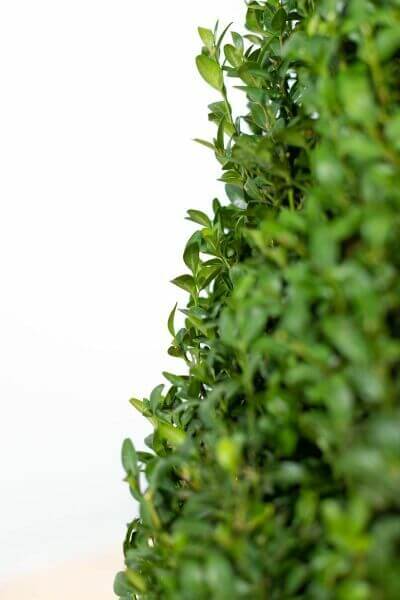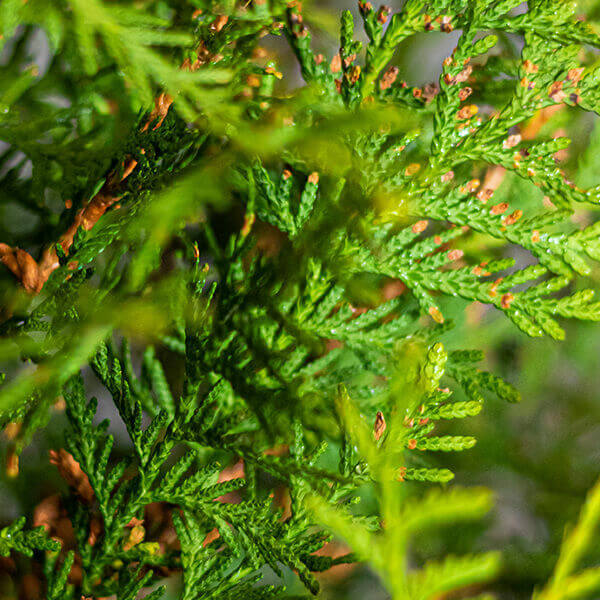Hedge Plants For Texture
Hedge Plants For Texture
Blog Article
Best Hedging Plants For Japanese Gardens
Boost your garden's allure with lavish hedge varieties such as Yew (Taxus), Thuja, Laurel, Photinia, and Bamboo, commemorated for their structural integrity and ecological benefits.
Yew and Thuja supply evergreen coverage and winter season durability, while Laurel uses fast development and broad, fragrant leaves.
Photinia includes seasonal beauty with its dynamic red foliage, and Bamboo lends a low-maintenance, tranquil ambiance.
These hedges improve air quality, lower sound, and create tranquil, personal areas.
Appropriate planting, spacing, and maintenance guarantee energetic development and ecological consistency.
Check out how these lush varieties can raise your garden's beauty and wellness.
Key Takeaways
Change Your Garden With Lush Hedge Ranges
- Select Yew for its dense, evergreen growth and exceptional durability.
- Opt for Laurel for its fast growth and broad leaves, guaranteeing quick personal privacy.
- Select Photinia for its vibrant seasonal foliage, which turns a striking dark red.
- Make use of Bamboo for a low-maintenance, winter-hardy hedge with aesthetic appeal.
- Area plants 2-3 per meter and prune routinely for ideal development and health.
Popular Hedge Plants
When transforming a garden with lavish hedge varieties, it's important to think about popular hedge plants such as Yew, Thuja, Laurel, and Photinia due to their unique qualities and advantages.
Yew (Taxus) is highly esteemed for its durability and thick, green development, making it a prime option for withstanding landscapes.
Thuja is kept in mind for its evergreen foliage and robust winter durability.
Photinia includes seasonal vibrancy with red leaves that darken with time, creating vibrant visual appeal.
Laurel uses rapid growth and aromatic, broad leaves, perfect for fast personal privacy.
Furthermore, Bamboo is an exceptional option for ambiance, using a low-maintenance, winter-hardy alternative that boosts the garden's visual with its sophisticated, swaying walking sticks.
These selections deal with a range of horticultural needs and preferences.
Advantages of Garden Hedges
Garden hedges use a wide variety of benefits, making them an important addition to any landscape. These natural barriers are cost-efficient to execute and offer significant wind defense, improving air circulation and adding to sound reduction. The thick foliage of hedges like Thuja and Beech guarantees personal privacy by obstructing visibility, developing a peaceful and remote environment.
Hedges likewise play an essential function in microclimate policy, supplying a stable environment that fosters plant development and minimizes temperature level fluctuations. Their detailed leaf structures filter contaminants, enhancing air quality and contributing to a much healthier garden ecosystem.
Additionally, hedges master sound reduction, soaking up and deflecting sound waves to lower ambient sound levels. This dual performance of providing both acoustic and visual privacy improves the overall serenity and visual appeal of any garden.
Planting and Maintenance Tips
For an effective hedge, meticulous preparation of the planting area is vital. Make sure the soil has proper pH and drain to support strong root advancement.
Space the plants appropriately for the selected types. Water the hedge frequently during its preliminary development phase, changing as required with seasonal changes.
Execute a methodical bug control and disease prevention technique, utilizing natural or chemical treatments when needed. Frequently inspect for aphids, mites, and fungal infections.
Apply mulch to keep wetness and reduce weeds. Seasonal pruning promotes thick development and air circulation, important for plant health.
Following these guidelines will help you cultivate a dynamic, properly maintained hedge that boosts the appeal of your garden.
Spacing and Cutting Guidelines
Spacing and Trimming Guidelines
Proper spacing and trimming are crucial for cultivating healthy, visually appealing hedges. Appropriate spacing ensures each plant gets sufficient nutrients, light, and airflow.
Follow these guidelines for optimal hedge maintenance:
- Spacing: Position hedge plants 2-3 plants per meter to encourage robust growth.
- Pruning Techniques: Regular pruning is essential for maintaining desired hedge height and shape. Trim new growth in summer and cut back older wood throughout winter season.
- Seasonal Care: Adjust trimming methods and schedules according to seasonal requirements to guarantee plant health.
- Hedge Height: Regularly display and cut to preserve the preferred hedge height and achieve consistent looks.
Following these steps will guarantee your hedge prospers, improving both the appeal and functionality of your garden.
Picking the Right Hedge
Selecting the Right Hedge
Selecting the proper hedge includes assessing aspects such as mature height, foliage density, and environmental strength. Effective hedge plant choice requires comprehending each species' growth attributes and site-specific versatility.
For example, Yew (Taxus) uses outstanding durability and dense development, while Thuja is noteworthy for its winter strength. Furthermore, considering upkeep requirements is essential; fast-growing types like Laurel or Privet demand routine cutting, whereas low-maintenance options like Bamboo or Ivy might be preferable for those looking for minimal maintenance.
Environmental elements such as soil type, light schedule, and moisture conditions need to also assist the selection procedure. This mindful method makes sure the chosen hedges will prosper, providing both aesthetic and functional advantages to the garden landscape.
Shipment and Planting Suggestions
To ensure your hedge plants grow, they must be delivered by specialized carriers and planted promptly upon arrival.
Follow these vital actions for successful planting:
- Soil Preparation: Improve the soil with organic matter to improve drain and nutrient material.
- Planting Depth: Create a trench two times the width and equivalent to the depth of the root ball.
- Watering Techniques: Water thoroughly after planting, keeping the soil consistently wet but not saturated.
- Mulching: Use a layer of mulch to keep wetness and suppress weeds.
Customer Support and Service
Provided the vital role of prompt assistance in horticultural pursuits, our client support group is available six days a week through telephone, e-mail, and social networks to use skilled advice and swiftly deal with any concerns. Their dedication to quick reaction times ensures customer complete satisfaction by fixing inquiries connected to plant health, optimum planting techniques, and maintenance schedules.

Interaction Technique
-------------------
Within 48 hours
This detailed support group, enhanced by a stellar 9.3/ 10 customer score, highlights our commitment to improving the gardening experience for every single customer.
Regularly Asked Questions
The Length Of Time Does It Consider Hedge Plants to Develop?
Hedge plants generally require one to 3 years to become completely developed, with the precise period differing by types and growing conditions.
Effective care during this critical period is essential for robust development. Consistent watering, watchful weed control, and suitable fertilizer application are critical in promoting strong root advancement.
For instance, fast-growing types like Laurel may establish faster, while slower-growing varieties such as Yew may take longer. Thorough upkeep accelerates the establishment process, leading to dense and healthy hedges.
What Are the Best Hedge Plants for Privacy?
The question of the very best hedge plants for personal privacy includes assessing evergreen and deciduous choices.
Evergreen hedges like Thuja, Laurel, and Cypress provide year-round coverage, making sure constant privacy.
On the other hand, deciduous hedges such as Beech use seasonal privacy, shedding leaves in chillier months.
Key upkeep ideas for privacy hedges include routine cutting, fertilizing in spring, and appropriate spacing-- generally 2 to 3 plants per meter.
Additionally, constant watering and persistent weed removal are important for promoting healthy, thick growth.
Can Hedge Plants Bring In Wildlife to My Garden?
Yes, hedge plants can draw in wildlife to your garden by providing necessary benefits like shelter, food, and nesting sites, consequently improving regional biodiversity. For example, yew, holly, and laurel are outstanding for attracting birds, while ivy supports a range of insects.
However, it is necessary to keep in mind that there are some disadvantages, such as increased maintenance to manage bugs and regular maintenance. Carefully choosing and maintaining hedge varieties can assist balance these downsides and benefits, eventually fostering a dynamic and sustainable ecosystem in your garden.
Exist Any Blooming Hedge Plants Available?
Yes, there are flowering hedge plants offered that can improve the appeal of your garden.
For example, Elaeagnus, also called Olive Willow, produces aromatic white flowers in the fall, including a touch of elegance.
Photinia, another popular choice, showcases lively red leaves that grow into a rich green, creating a dynamic visual impact throughout the seasons.
To make sure these plants flourish, it's important to practice correct pruning strategies and seasonal maintenance, such as trimming new growth in the summertime and cutting down in the winter season.
These measures will help preserve the health and aesthetic appeal of your flowering hedges.
How Do I Prevent Insects in My Hedge Plants?
To avoid pests in hedge plants, employ natural insect control techniques and preserve correct hedge care. Present beneficial bugs like ladybugs, which victimize damaging bugs, to develop a balanced community.
Routinely examine your hedges for indications of problem and quickly eliminate any affected parts to prevent the spread. Ensure the health of your hedges by using well balanced fertilizers and supplying appropriate water.
Use mulching to keep soil moisture and correct spacing to minimize plant stress and promote robust growth. These practices collectively assist in decreasing bug problems and preserving a healthy hedge.
Conclusion
In essence, choosing the ideal hedge ranges such as Yew, Thuja, and Laurel can change any garden into a relaxing haven. These plants provide year-round plant, improve aesthetic appeal, and deal practical benefits like sound decrease and wind protection.
Correct planting methods, accurate spacing, constant watering, and seasonal trimming are vital for optimal development.
Trusted delivery services and expert client support ensure a smooth experience from purchase to planting, making it simpler than ever to raise your outdoor area.
Garden hedges provide a multitude of advantages, making them a valuable addition to any landscape. These natural barriers are cost-efficient to execute and supply read more considerable wind defense, improving air blood circulation and contributing to noise decrease. The dense foliage of hedges like Thuja and Beech makes sure privacy by blocking visibility, producing a remote and serene environment.

Pruning Techniques: Routine pruning is vital for maintaining wanted hedge height and shape. Trim new growth in summer and cut back older wood throughout winter season.
Report this page